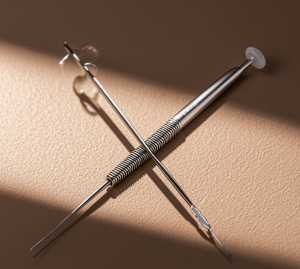ANTISHICNC CNC Turning Milling Machines,CNC Lathes
ANTISHICNC CNC Turning Milling Machines,CNC Lathes
In the medical industry, CNC Swiss-type lathes are widely used, mainly for processing various medical devices and related parts.
Next, Shanghai ANTS Machine Equipment Co., Ltd. will introduce you to the main medical fields of application:
| Implants | Such as knee and hip replacement parts, spinal fusion devices, etc. These implants usually require high-precision processing to ensure compatibility and safety with the human body. Materials may include a variety of metals and plastics such as titanium and PEEK. |
| Machinery parts for electronic medical devices | Used to produce many parts of equipment such as MRI scanners, X-ray machines, heart rate monitors, such as buttons, knobs, levers, etc. These components need to have a high level of quality to avoid machine failure when moving around the hospital. |
| Machinery surgical instruments | Including surgical scissors, biopsy tubes, blade handles, etc. When manufacturing such instruments, additional safety considerations need to be met, such as easy sterilization, and due to the strict requirements for precision, small batches or customized production methods for specific patients on CNC lathes are more suitable. |
| Medical device molds | Can be used to manufacture syringe molds, pharmaceutical packaging molds, etc. Such molds require high precision and wear resistance. |
| Precision medical items | Ability to perform extensive surface treatment to ensure that there are no surface defects. |
The application of CNC Swiss lathes in the medical industry is of great significance. It can meet the high requirements of precision and accuracy in medical device manufacturing, and help produce high-quality, safe and reliable medical products. At the same time, with the continuous development and progress of medical technology, the application of CNC lathes will continue to expand and deepen.

From the perspective of medical precision products, the application is very extensive. The engineers of Shanghai ANTISHICNC will give you the following examples:
| Surgical instruments | 1. Micro surgical forceps: used for delicate operations in minimally invasive surgery, such as ophthalmic surgery. |
| 2. Fine suture needle: For wound suturing during surgical operations, the size and shape of the needle tip and needle body require extremely high precision. | |
| Diagnostic equipment parts | 1. Optical components of the microscope: such as high-precision lenses, prisms, etc., which affect the imaging quality and diagnostic accuracy |
| 2. Detection probe of blood analysis instrument: used to accurately detect various components in blood. | |
| Implants and related components | 1. Tiny parts of the pacemaker: such as battery contacts, circuit boards, etc., to ensure the stable operation of the pacemaker. |
| 2. Internal components of the cochlear implant: including the chip holder of the sound processor, etc. | |
| Dental Instruments | 1. Orthodontic brackets: require precise size and shape to achieve effective tooth correction. |
| 2. The base and screws of the dental implant: ensure the close integration and stability of the dental implant and the alveolar bone. | |
| Laboratory supplies | 1. Micropipette tip and piston: to achieve accurate transfer of trace amounts of liquid. |
| 2. High-precision culture dishes: ensure the consistency of the cell culture environment. |
Next, the engineers of Shanghai ANTISHICNC will introduce you to the processing flow of fine suture needles:
1.Design and programming:According to the design requirements of fine suture needles, use the corresponding programming software to write CNC machining programs. Determine the shape, size, needle tip angle and other parameters of the suture needle, and convert this information into code instructions that the Swiss CNC lathe can recognize.
2.Prepare materials:Select materials suitable for making suture needles, usually stainless steel with good biocompatibility and mechanical properties. The diameter and length of the material need to be selected according to the specifications of the suture needle.
3.Clamping materials:Fix the stainless steel material on the chuck or fixture of Shanghai ANTISHICNCCNC Swiss-type lathe to ensure that the material is stable and accurately positioned during processing.
3.Tool setting: Through the tool setting operation, determine the relative position of the tool and the workpiece, and establish the reference point for processing.
4.Rough machining: According to the programming instructions, the Swiss-typeCNC lathe controls the tool to perform preliminary cutting of the material, remove the excess part, and form the approximate shape of the suture needle.
5.Finishing: Further accurately process the various parts of the suture needle, including the shape of the needle tip and the surface finish of the needle body, to meet the requirements of fine suture needles. This may involve using smaller tools, slower feed speeds, etc. to achieve higher precision.
6.Punching:If the suture needle requires a threading hole, the CNC machine can use drilling or laser punching techniques to process the small hole in the appropriate position.
7.Surface treatment: The suture needle is surface treated, such as grinding and polishing, to make its surface smoother and reduce damage to the tissue.
8.Quality inspection:Use various inspection equipment and methods to inspect the dimensional accuracy, needle tip sharpness, surface quality, etc. of the processed suture needle to ensure compliance with relevant standards and requirements.
9.Cleaning and disinfection:For medical fine suture needles, strict cleaning and disinfection are also required to ensure their sterility and safety.

For more technical details and CNC Swiss lathe knowledge, please contact Shanghai ANTS Machine Equipment Co., Ltd. We provide customers with timely technical support, training and high-quality lathes.
CNC Swiss lathe website: swiss-lathe
Keywords: CNC lathe, CNC Swiss lathe processing surgical precision suture needles, medical device industry